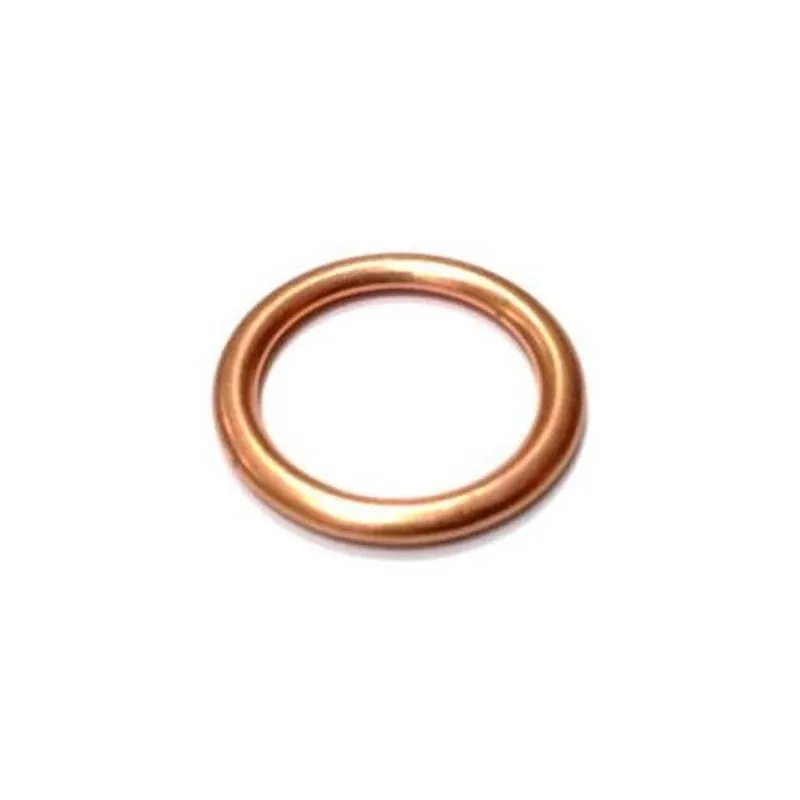axle shaft oil seal
Understanding Axle Shaft Oil Seals Importance, Function, and Maintenance
Axle shaft oil seals are crucial components in vehicles, especially in the driveline assemblies. They play a pivotal role in ensuring the smooth operation of the vehicle’s transmission system and preventing fluid leaks that could lead to significant mechanical issues. This article delves into the importance, function, and maintenance of axle shaft oil seals.
What is an Axle Shaft Oil Seal?
An axle shaft oil seal is a specific type of sealing device designed to retain the lubricating oil within the axle housing, preventing it from leaking out while also keeping dust, dirt, and moisture from entering the assembly. Constructed typically from durable materials such as rubber, neoprene, or silicone, these seals form a barrier that ensures the longevity and efficiency of the axle and surrounding components.
Importance of Axle Shaft Oil Seals
1. Fluid Retention The primary function of an axle shaft oil seal is to retain the lubricating oil necessary for the smooth operation of the axle. This oil reduces friction between the moving parts, which is vital for performance and efficiency.
2. Preventing Contaminant Entry In addition to retaining oil, these seals also prevent dirt, debris, and water from entering the axle assembly. Contamination can lead to severe damage, reduced efficiency, and increased wear on the components within the axle.
3. Cost-Efficiency By preventing leaks and contamination, axle shaft oil seals help maintain the overall health of the axle and transmission system. This can lead to reduced maintenance costs and extended service life, making them a cost-effective solution for vehicle owners.
The Function of Axle Shaft Oil Seals
The operating principles of axle shaft oil seals are relatively straightforward. When the vehicle is in motion, the axle rotates, requiring consistent lubrication to function effectively. The oil seal is situated at the interface where the axle shaft exits the axle housing. As the axle rotates, the seal maintains a tight fit against the shaft, which ensures that oil remains contained within the housing.
axle shaft oil seal

These seals may also feature spring-loaded designs that help maintain pressure against the axle shaft. This design is vital, especially under varying temperature and pressure conditions, as it ensures a consistent seal and reduces the risk of leaks.
Signs of Worn or Damaged Oil Seals
Over time, axle shaft oil seals may wear out or become damaged due to reasons such as exposure to extreme temperatures, contamination, or general wear and tear. It’s essential for vehicle owners to be aware of common signs of a failing oil seal, including
- Oil Leaks Puddles or spots of oil under the vehicle are often the most visible signs of a problem. - Whining Noises Unusual sounds from the axle or differential area can indicate low lubricant levels due to a leak. - Poor Handling If the vehicle feels less stable or responsive, it could be a sign that lubrication levels are insufficient.
Maintenance and Replacement
Regular inspections can help detect issues with axle shaft oil seals before they lead to significant problems. Vehicle owners should consider having their seals checked during routine maintenance. If signs of wear are detected, it is essential to replace the seals promptly to avoid further damage to the axle or transmission components.
Replacing axle shaft oil seals generally involves
1. Disassembling the Axle This process may require specialized tools and expertise, particularly if the vehicle is equipped with an all-wheel or four-wheel drive system. 2. Cleaning the Area Before installing new seals, the mating surfaces must be cleaned thoroughly to ensure a proper fit. 3. Installing New Seals The new oil seal should be installed carefully, ensuring it sits evenly and without distortion.
Conclusion
Axle shaft oil seals are integral to the reliable operation of any vehicle. Their role in maintaining lubrication, preventing contamination, and ensuring efficiency cannot be overstated. By understanding their function and importance, and by keeping an eye out for signs of wear, vehicle owners can take proactive measures to maintain their vehicles and prevent costly repairs. Whether through regular inspections or prompt replacement when necessary, attention to axle shaft oil seals is a critical aspect of vehicle maintenance.
-
Simplifying Oil Changes: A Comprehensive Guide to Oil Drain Plugs and Their Variants
News Aug.04,2025
-
Mastering Oil Drain Maintenance: Solutions for Stripped, Worn, and Upgraded Oil Plugs
News Aug.04,2025
-
Fixing Oil Pan Plug Issues: Leaks, Stripped Nuts, and the Right Replacement Solutions
News Aug.04,2025
-
Everything You Need to Know About Oil Drain Plugs: Sizes, Fixes, and Upgrades
News Aug.04,2025
-
Choosing the Right Oil Drain Plug: A Guide to Sizes, Materials, and Drain Innovations
News Aug.04,2025
-
A Complete Guide to Automotive Drain Plugs: Types, Problems, and Innovative Solutions
News Aug.04,2025
-
The Ultimate Guide to Car Repair Kits: Tools and Essentials Every Driver Should Own
News Aug.01,2025
Products categories















